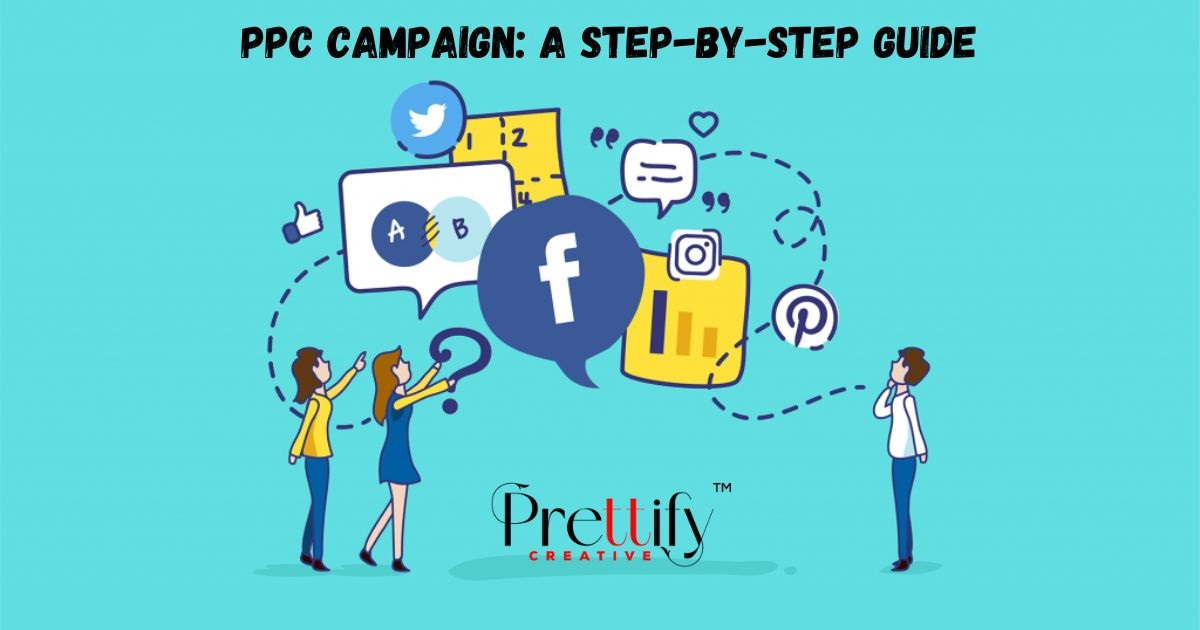
Pay-Per-Click (PPC) advertising is a powerhouse in the digital marketing realm, offering advertisers a platform to garner attention in the expansive online landscape. With PPC, advertisers pay a nominal fee each time a user clicks on their ad.
Understanding PPC Advertising:
PPC, or Pay-Per-Click, empowers businesses to stand out amidst the online clutter by featuring ads that attract clicks from potential customers.
To grasp the essence of PPC advertising, it’s beneficial to peek into the strategies of competitors and observe industry trends. Drawing inspiration from successful campaigns can provide valuable insights.
Additionally, comprehending your target audience is pivotal for a fruitful PPC campaign. Consider your ideal guests if you were hosting a party – envision who you want to reach and tailor your strategies accordingly.
Preparing for Your PPC Campaign:
Before embarking on your PPC journey, lay the groundwork by researching competitors and understanding your target audience.
By analyzing competitors’ tactics, you can gather inspiration and refine your own approach. Take note of their ad strategies, messaging, and keyword selection.
Understanding your target audience enables you to customize your campaign to resonate with the right demographic. Consider factors such as demographics, interests, and language preferences.
Setting Up Your PPC Campaign:
To kickstart a successful PPC campaign, follow these step-by-step instructions using Google Ads as a reference:
Define Your Goal: Determine the objective of your campaign, whether it’s driving sales, boosting brand awareness, or increasing website traffic.
Conduct Keyword Research: Identify relevant keywords related to your business using specialized tools to unlock the code to reaching your target audience.
Select Your Bidding Strategy: Decide on your bidding strategy by researching industry benchmarks and evaluating competitors’ tactics.
Configure Campaign Settings: Specify your target audience’s location, language, and interests, and consider creating multiple ad sets for versatility.
Craft Compelling Ad Copy: Create irresistible ads by incorporating relevant keywords, highlighting unique selling points, and including a clear call-to-action (CTA).
Optimize Your Landing Page: Ensure alignment between your ad and landing page, providing a seamless user experience that instills trust and encourages action.
Allocate Your Budget: Set a daily budget for your PPC campaign, leveraging Google Ads’ budgeting options to maximize effectiveness.
Monitor and Adjust: Keep a close eye on key metrics such as Click-Through Rate (CTR), Conversion Rate, Impressions, Clicks, and Cost Per Click (CPC), and make adjustments as needed to optimize performance.
Crafting Compelling Ad Copy:
Compelling ad copy is pivotal for capturing your audience's attention and driving clicks. Follow these tips:
Incorporate Relevant Keywords: Integrate keywords that align with your business and target audience to enhance visibility.
Highlight Unique Selling Points: Showcase what sets your business apart, whether it’s exceptional service or top-notch products.
Include a Clear CTA: Guide users on the desired action, whether it’s visiting your website or making a purchase.
Remember to keep your ad copy concise, engaging, and tailored to resonate with your audience.
Monitoring and Optimizing Your Campaign:
Once your PPC campaign is live, continuous monitoring and optimization are essential for success. Here's how:
Track Key Metrics: Monitor metrics like CTR, Conversion Rate, Impressions, Clicks, and CPC to gauge performance.
Make Adjustments: Use data insights to refine targeting, adjust bidding strategies, and optimize ad copy.
Experiment and Test: Explore new strategies and conduct A/B testing to identify the most effective tactics.
By staying vigilant and making data-driven adjustments, you can maximize the impact of your PPC campaign and achieve your desired objectives.










